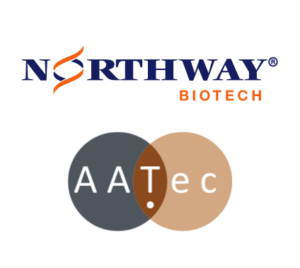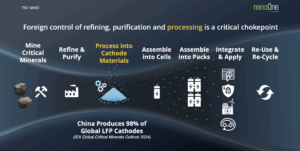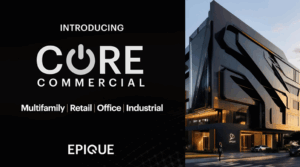Oakbrook Terrace, Illinois / Syndication Cloud / June 25, 2025 / Goldstone Financial Group

Key Takeaways
- Regulatory Overhaul: New fiduciary standards and disclosure requirements have impacted advisor accountability
- Documentation Standards: Written agreements and transparent fee structures have become the industry norm
- Client Protection: Improved oversight and recourse options provide stronger investor safeguards
- Professional Standards: Continuing education and licensing requirements elevated advisor qualifications
- Technology Integration: Digital platforms created unprecedented transparency in portfolio management
Today, talking to a financial advisor is completely different from the pre-2008 era. The wild west days of unregulated advice and hidden fees have given way to a more professional, transparent industry built on accountability.
This transformation was born from necessity. The 2008 financial crisis didn’t just crash markets—it shattered the public’s faith in financial professionals. Many surveys have found that Americans lost trust in their financial institutions, with them questioning whether their advisors were working in their best interests or simply chasing commissions.
The Great Regulatory Reset
Before 2008, many financial advisors operated under a “suitability” standard—meaning they only had to recommend investments that were suitable for clients, not necessarily the best options available. This loophole allowed advisors to steer clients toward higher-commission products that benefited the advisor more than the investor.
The Dodd-Frank Act and subsequent regulations changed everything. The fiduciary standard now requires many advisors to act in their clients’ best interests, period. This isn’t just a suggestion—it’s a legal obligation with real consequences for violations.
Modern investors can verify whether their advisor operates under fiduciary standards, something that was rarely discussed before the crisis. Legitimate financial professionals now welcome these requirements because they eliminate conflicts of interest and build stronger client relationships.
From Handshake Deals to Bulletproof Documentation
The pre-2008 era often relied on verbal agreements and vague promises. Today’s financial advisory industry runs on documentation. Every recommendation, fee structure, and potential conflict of interest must be disclosed in writing.
This shift protects both parties: clients know exactly what they’re paying for and what services they’ll receive, and advisors benefit from clear expectations and reduced liability. Fee-only structures have become more common, eliminating the confusion around commission-based compensation that plagued the industry.
Professional firms now provide detailed investment policy statements, regular performance reports, and clear explanations of how fees are calculated. This transparency was rare before the crisis but is now standard practice among reputable advisors.
Technology as the Great Equalizer
Perhaps the biggest change has been technology’s role in creating transparency. Before 2008, many investors received quarterly statements by mail and had limited visibility into their portfolios between reporting periods.
Today’s clients can access their accounts 24/7, view real-time performance data, and track exactly how their money is being managed. This constant visibility makes it nearly impossible for unethical advisors to hide poor performance or inappropriate investments.
Digital platforms also enable better communication between advisors and clients. Regular updates, educational content, and detailed reporting have become standard features that help build trust through consistent transparency.
The New Professional Standard
The crisis exposed a troubling reality: many people calling themselves “financial advisors” lacked proper credentials or continuing education. The industry response has been a dramatic elevation in professional standards.
Modern financial advisors must maintain licenses, complete ongoing education requirements, and adhere to strict ethical codes. Regulatory bodies like FINRA and the SEC maintain public databases where investors can verify an advisor’s background, credentials, and any disciplinary actions.
Established professionals like Anthony Pellegrino of Goldstone Financial Group exemplify this new standard of transparency, openly sharing credentials and maintaining clear documentation of their approach to client relationships. This openness reflects how the industry has embraced accountability as a competitive advantage.
Client Protection Gets Teeth
Pre-2008 investors had limited recourse when advisors acted inappropriately. Today’s regulatory framework provides multiple layers of protection, from enhanced oversight to improved dispute resolution processes.
The Securities Investor Protection Corporation (SIPC) expanded coverage, and many firms carry additional insurance to protect client assets. Regulatory examinations became more frequent and thorough, with real consequences for violations.
These protections mean investors can feel more confident working with properly credentialed advisors who operate under current regulatory standards.
Background Checks Became the Norm
One of the most significant changes post-2008 has been the normalization of background verification. Before the crisis, many investors never thought to research their advisor’s history or credentials. Today, it’s considered standard due diligence.
Regulatory databases now make it easy for investors to check an advisor’s licensing status, employment history, and any disciplinary actions. The Central Registration Depository (CRD) system provides public access to information that was previously difficult to obtain.
Legitimate advisors not only accept this scrutiny—they encourage it. Professional firms often provide direct links to their regulatory records and maintain detailed biographies of their team members. This transparency has become a mark of credibility rather than something to hide.
The Education Revolution
The crisis revealed that many investors lacked basic financial literacy, making them vulnerable to unsuitable advice. The industry response included a massive push toward investor education and advisor continuing education requirements.
Today’s financial professionals must complete regular training on ethics, regulations, and best practices. Many firms have embraced educational content as a way to build trust with clients. Rather than keeping investment strategies mysterious, modern advisors explain their reasoning and help clients understand the decision-making process.
This educational approach serves multiple purposes: it builds client confidence, reduces miscommunication, and demonstrates the advisor’s expertise. Clients who understand their investments are more likely to stick with their long-term strategy during market volatility.
Fee Transparency Becomes Standard
Perhaps nothing damaged trust more than hidden fees and unclear compensation structures. Before 2008, many investors had no idea how their advisors were compensated or what they were paying for various services.
Today’s regulatory environment requires detailed fee disclosure. Advisors must explain not just what they charge, but how those fees are calculated and when they’re assessed. Investment products must clearly state their expense ratios and any additional costs.
This transparency has led to more competitive pricing and better value for investors. When fees are clearly disclosed, advisors must justify their value proposition, leading to improved service quality across the industry.
Risk Management Gets Serious
The 2008 crisis taught harsh lessons about risk management and diversification. Many investors discovered they were far more exposed to risk than they realized, often because their advisors hadn’t properly explained portfolio concentration or correlation risks.
Modern financial advisory has embraced sophisticated risk assessment tools and stress testing. Advisors now regularly review portfolio risk levels and explain how different market scenarios might affect client investments. This proactive approach helps prevent the kind of surprises that devastated portfolios during the crisis.
Professional advisors also maintain errors and omissions insurance and work with registered investment advisor firms that carry additional protections for client assets. These safeguards provide multiple layers of security that weren’t common before 2008.
The Trust Dividend
The financial advisory industry’s transformation since 2008 has created what experts call a “trust dividend.” Firms that embrace transparency, maintain proper credentials, and operate under fiduciary standards tend to attract more clients and build stronger long-term relationships.
This shift rewards legitimate professionals while making it harder for unqualified individuals to operate in a space where transparency and client education are viewed as competitive advantages rather than regulatory burdens.
The result is an industry that better serves investors’ needs while maintaining the professional standards clients deserve. Modern advisory relationships are built on mutual respect, clear communication, and shared understanding of goals and risks.
What This Means for Today’s Investors
The post-2008 regulatory environment has created unprecedented protections for investors, but these safeguards only work when clients choose properly credentialed advisors who operate under current standards.
Today’s investors have access to more information than ever before. Regulatory databases, fee disclosure documents, and professional credentials are all publicly available. The challenge isn’t finding information—it’s knowing how to evaluate it and what questions to ask.
Legitimate financial advisors welcome questions about their background, methodology, and fee structure. They provide clear documentation, maintain proper licenses, and operate under fiduciary standards. Most importantly, they view client education as an essential part of their service.
For investors seeking financial guidance, the lesson is clear: work with advisors who embrace the post-2008 standards of transparency and accountability. The tools to verify these qualifications are readily available, and reputable professionals will encourage their use.
The financial advisory industry’s evolution since 2008 has created better outcomes for investors willing to do their homework and work with consumer-reviewed and credentialed professionals who operate under the highest ethical standards.
Goldstone Financial Group
contactus@goldstonefg.com
+1 630 620 9300
18W140 Butterfield Road
Oakbrook Terrace
Illinois
60181
United States




























